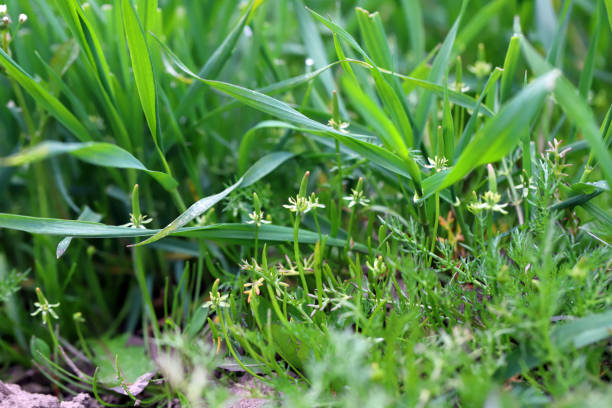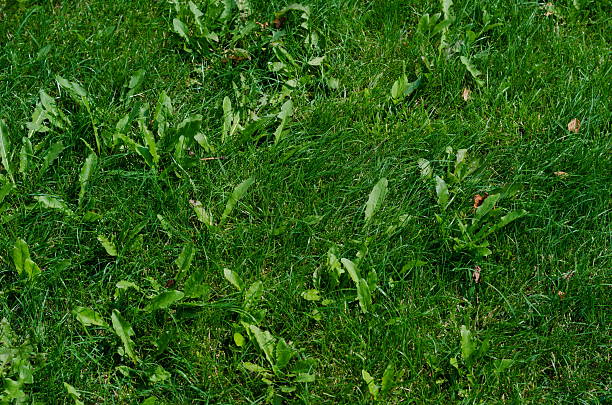
Every gardener is aware that weeds frequently appear in unexpected locations. In gutters, on your lawn, and in the spaces between your paving stones… the list is endless. It’s true that keeping weeds at bay is an ongoing challenge that often requires year-round attention.
But why exactly are weeds such a big issue? What causes them to flourish in such peculiar locations? What can be done to stop them from arising in the future? You’re in the right place if you’re asking any of these questions to yourself.
Table of Contents
Where Do Weeds Come From?
Some Weeds Rely on Nature to Do the Hard Work
Dandelions and other common garden weeds can grow from seeds, but they aren’t intentionally planted. Seeds in the dandelion seed head also called a dandelion clock, are airborne and can be dispersed by the wind.
Many weeds, like dandelions, rely on nature to help them colonize your garden. Some weeds produce seeds that are dispersed by the wind, while others produce seeds that adhere to the fur of passing animals (such as your cat or dog), and still, others produce tasty seeds that are consumed by birds and urinated out in new locations (a process known as endozoochory).
Some Weeds Lay Dormant Underground
Some varieties of garden weeds have tiny roots or rhizomes that can spread throughout the soil and grow. Before emerging as a new weed on the surface, these can lay dormant beneath your lawn, patio, or decking for years. Naturally, there isn’t much you can do to treat rhizomes that are present under the soil. Using a specialized herbicide on the weeds you can see on the surface is one of the most efficient methods we have discovered. When this is moved deeper into the plant’s rhizome and root system, the entire plant—including the parts you can’t see—is effectively killed.
Some Weeds Are Planted Accidentally
Unwanted plant seeds can be found in many garden products, despite what you might think. Cheap grass seed is one of the main offenders, but weeds have also been known to grow from discarded bird seed.
Keep a close eye out for any potential weed seeds or fragments that may end up establishing themselves in the ground when you introduce anything new to your garden. To keep undesirable weeds out of your garden, use high-quality grass seed and fuss-free bird food whenever possible.
4 Ways Weeds Spread:
Blowing
The wind is typically responsible for new weeds entering a lawn. If you think about a dandelion seed head, the seeds are carried in by the “parachute” that is attached to each individual seed. In order to reach a lawn or landscape bed, the seeds can thus travel a great distance.
Excrement
One more means of seed dispersal is through birds. They will consume the seeds, which may pass through their digestive tract and be deposited on a lawn with some natural fertilizer to aid in its growth. Many invasive plants, like wild grapes, frequently spread in this way.
Rain
Seeds are dispersed by the wind in many places, including driveways and sidewalks. These seeds will move along paths and land on the edges when it rains. Weeds are typically an issue along sidewalks and driveways for this reason.
Carriers
Other seeds have tiny barbs that could tangle in an animal’s fur and fall into your lawn when the animal scratches itself. Seeds can last for many years in a viable state.
Why Do Weeds Grow?
Weeds are opportunistic and grow in favorable conditions, such as particular temperatures, lawn moisture levels, and bare or thin turf areas, and they can even grow in cracks in the pavement on driveways, sidewalks, and roads. Everywhere there is space, weeds can spread. Weed seeds are plentiful, come from many different places, and have the capacity to remain dormant in the soil for many years before germination. Weeds produce thousands of seeds per plant while they are actively growing, and they disperse them throughout the season. A little assistance from the wind can help spread some weeds, like dandelion. Poor quality grass seed from the store and soils brought in for new plantings are additional sources of weeds.

Types of Weeds
Annual Weeds
These weeds reproduce by setting seed, which germinates and grows for one season before dying off naturally at the end of their life cycle. These would include chickweed, oxalis, groundsel, and hairy bittercress.
Biennial Weeds
The lifespan of biennial weeds is two years. A seed grows into a leafy plant in its first year of germination. The plant blooms the following year, producing seeds that restart the new life cycle of the plant seed. These would consist of prickly lettuce, wild carrot, and clover.
Perennial Weeds
These weeds have multiple growing seasons and reproduce both by producing seeds and/or by sending out roots. Dandelion, thistle, and ground ivy are a few examples.
Are Conditions in Your Garden Optimal for Weeds?
When asking the question “what causes weeds to grow?” the most obvious answer is the conditions of your garden. Weeds need to be given certain things in order to grow, just like all other living things. In most cases, weeds grow in places that:
• Other plants aren’t already growing in
• Are in direct sunlight (or shade, depending on the weed)
• Are the right temperature (warm or cold, depending on the weed)
• Have access to moisture
Making your garden less inviting is one method for fewer weeds. This might entail filling in empty spaces, enhancing drainage, etc.
How to Control Weeds?
Mow Them Down before They Seed
By simply mowing them down before they produce seeds, the majority of weeds that emerge in the lawn in the late winter and very early spring can be completely eliminated. These weeds are annuals, just like corn, tomatoes, begonias, petunias, nasturtiums, and other plants, which means they only live for one year. In the spring, they produce seeds and scatter them on the ground to spread their species. However, if these plants are cut down before they produce seed heads, they are unable to reproduce. This method of weed control in your garden is the least disruptive.
Add Organic Material in Spring and Fall
Most of the lawns in this area are St. Augustine turf is a very hardy, aggressive, and resilient warm-season grass. St. was strong, healthy, and free of illness. Augustine will eventually drive weeds out. The St. Croix River will benefit from two applications of a quarter inch of organic material, one in mid-October and the other in mid-April. weeds can be removed by using Augustine grass itself.
Pull the Weeds
This involves a lot of stooping, bending, and kneeling and is likely not the method of choice for homeowners and landscapers alike. This approach might be suitable if one wants to get a good workout.
Pre-emergent Herbicides
Not the best recommendation, but it definitely works. Pre-emergent herbicides with active ingredients like benefin, trifluralin, isoxaben, pendimethalin, and dithiopyr are effective, but users must be very careful, read and follow all instructions carefully, avoid run-off (which can harm both fresh and saltwater marine life as well as beneficial microbial life in the soil), and make sure that kids and pets are out of the area when using them. Additionally, try to avoid bringing the material inside the house. After washing the clothing used during application, run the washing machine without any other loads.
Conclusion
Weeds are very adaptable plants that can invade your lawn through a variety of different openings. Having a strong and dense lawn is the best way to lessen weed growth. Herbicides might be required to get rid of your weeds because not everyone has a perfectly manicured lawn. Herbicides are a labor- and cost-efficient way to keep weeds out of your lawn and landscape.